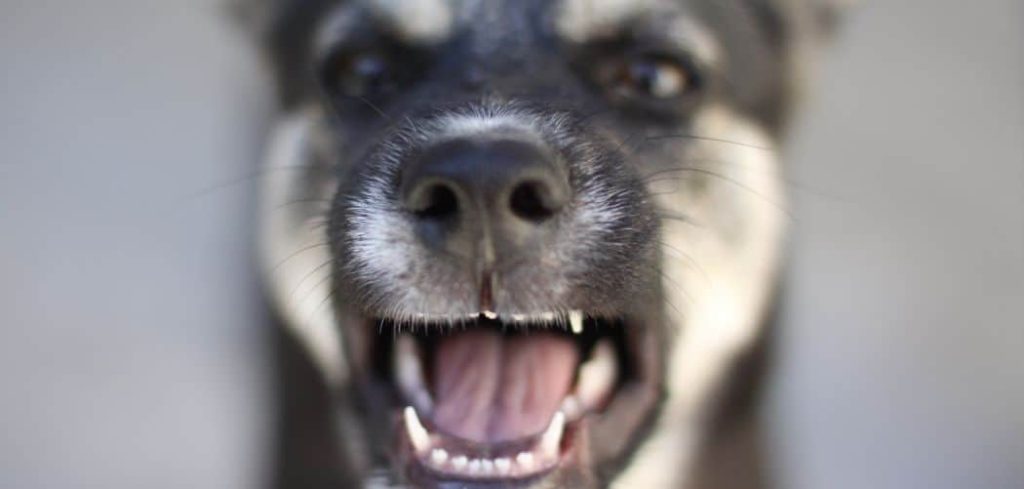When a dog starts showing aggression after being put on prednisone, it can be startling and upsetting.
Steroid medications like prednisone are often prescribed to help with inflammation, allergies, or autoimmune diseases — but sometimes, they can change your dog’s mood or behavior in unexpected ways.
We outline the common reasons for aggression in dogs taking prednisone, what you can do at home, and when to seek veterinary help.
Dog Prednisone Aggression — Why It Happens
Aggression in dogs taking prednisone usually stems from the drug’s effects on brain chemistry, hormone balance, or physical discomfort. Changes in cortisol levels can heighten irritability, hunger, and anxiety. Some dogs become reactive due to restlessness, disrupted sleep, or increased sensitivity to stress.

Dog Prednisone Aggression: Common Causes
1. Hormonal and Chemical Changes in the Brain
Prednisone mimics cortisol — the body’s natural stress hormone — and directly affects brain chemistry.
When cortisol levels spike due to the drug, dogs may experience heightened arousal, anxiety, or even mild confusion. This can make them more reactive to sounds, people, or other pets.
Increased cortisol also impacts serotonin and dopamine, the “feel-good” neurotransmitters that stabilize mood. With these changes, a normally gentle dog may growl, snap, or guard food or toys.
If your dog was already anxious before prednisone, the hormonal shifts may intensify that anxiety — making outbursts more likely.
Read more: Dog Prednisone Restlessness (Why your dog can’t settle down)
2. Pain or Physical Discomfort
Ironically, while prednisone often reduces inflammation, the underlying pain from conditions like arthritis or allergies can still flare between doses.
A dog in pain is naturally more defensive and may growl or nip when touched in sore areas. If prednisone causes stomach upset or muscle weakness, that discomfort can further fuel irritability.
Physical pain plus steroid-induced restlessness is a recipe for unpredictable reactions — even in dogs that have never been aggressive before.
3. Restlessness and Sleep Disturbance
Prednisone can cause insomnia and restlessness in dogs. You might notice pacing, whining at night, or difficulty settling down.
Sleep deprivation affects mood regulation in both humans and animals. A tired dog becomes less tolerant of frustration, more easily startled, and more likely to lash out.
When restlessness becomes chronic, it creates a feedback loop: lack of sleep worsens anxiety, which then feeds aggression. Managing your dog’s rest is crucial while on steroids.
4. Increased Hunger and Food Guarding
One of the most common side effects of prednisone is intense hunger. Dogs may act as if they’re starving, even shortly after eating.
This can trigger food guarding behaviors — growling or snapping when someone approaches their bowl, treats, or favorite snacks.
For multi-pet households, mealtimes may suddenly become tense. Dogs that never competed for food before may feel desperate under prednisone’s appetite-boosting effects.
Keeping meal routines calm and structured can help prevent scuffles and reduce food-related aggression.
5. Heightened Anxiety or Fearfulness
Prednisone can amplify emotional reactivity. Dogs prone to fear or separation anxiety may become hypervigilant — barking at small noises or reacting aggressively when startled.
Because steroids alter how the body processes stress hormones, your dog may remain “on edge” longer after a stressful trigger.
Fear-based aggression often looks like growling, lip-curling, or lunging when approached, even by familiar people. This isn’t defiance — it’s fear expressed through defensiveness.
6. Withdrawal or Rapid Dose Changes
If prednisone is tapered too quickly, your dog’s body struggles to rebalance cortisol production.
This hormonal crash can cause fatigue, confusion, and irritability. Some dogs may snap or act unpredictably during the adjustment period.
A gradual taper, guided by your vet, is essential. Never stop or reduce prednisone without professional supervision — doing so can cause serious health complications and behavioral shifts.
Read more: Dog panting and prednisone (Why it happens)
What to Do If Your Dog Is Showing Aggression on Prednisone
If your dog’s behavior changes noticeably after starting prednisone, the first step is to stay calm and avoid punishment. Your dog isn’t being “bad” — they’re reacting to chemical and physical changes beyond their control.
Keep their environment predictable. Avoid new visitors or stressful events until your dog stabilizes. Ensure they have a quiet, safe place to rest away from household activity.
Feed smaller, more frequent meals to help manage hunger spikes, and avoid free-feeding multiple pets at once.
Daily walks and light play can help release nervous energy. But if your dog seems overstimulated or irritable, focus on gentle enrichment like sniffing games or food puzzles instead of rough play.
If aggression continues or worsens, call your vet. They may lower the dose, adjust the taper schedule, or switch to a different anti-inflammatory medication with fewer mood-related side effects.
Read more: Dog Not Eating and Prednisone (What this means)
When to Call or Visit Your Vet
Contact your vet right away if:
Your dog’s aggression is sudden and intense, especially toward family members.
They start guarding food, toys, or spaces they never cared about before.
You notice other side effects — such as excessive panting, shaking, or vomiting — along with aggression.
Your dog seems unusually restless, anxious, or unable to settle for more than a few minutes.
The aggression persists even after several days of consistent care.
These could indicate that your dog’s body isn’t tolerating prednisone well, or that the dose is too high. In some cases, alternative medications or behavioral support may be necessary.
Read more: Dog Prednisone and Lethargy (When your dog becomes too tired)
Key Takeaway
Aggression caused by prednisone is usually temporary — but it’s a sign your dog’s body and brain are under stress.
By keeping routines calm, managing hunger, and working closely with your vet, most dogs return to their normal, loving selves once the medication is adjusted or discontinued.
Always treat sudden aggression as communication, not defiance. With patience, understanding, and professional guidance, you can keep your dog comfortable and safe during their treatment journey.
